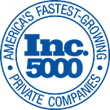"Fastest remote desktop I have ever used.” – G2.com 
Old DaaS vs. New DaaS
The Old Way vs. The New Way
The old way of cloud computing means procuring devices, spending days provisioning new users, using VPN to connect, securing individual EDR solutions, managing and maintaining these end-points and ultimately, refreshing them once they are end of life. This is not only expensive but also very complicated to manage. The new way of DaaS consolidates desktops, servers, storage, licensing, security, voice, backup and productivity suite, all in a single source solution called Desktop as a Service (DaaS). This simplifies IT management and significantly reduces the need for hardware refreshes. The new way of cloud computing converts CAPEX of PCs and Servers into OPEX (DaaS).
Evolution of Cloud Computing
We can think of the evolution of DaaS as occurring in four stages, which are highlighted below:
PHASE 1
Remote Access
PHASE 2
Centralized Management
PHASE 3
Workforce Hybridization
PHASE 4
Enablement Tool
PHASE 1
In its infancy, DaaS was simply a remote access tool. It was Citrix, VMWare, and people RDPing in remote desktops somewhere else. This defines the ‘Old DaaS’, which is essentially Virtual Desktop Infrastructure (VDI).
VDI vs. DaaS — While VDI and DaaS are similar, there are several key distinctions. First, VDI is typically based on a single-tenant model while DaaS relies on a multi-tenant model. Furthermore, VDI is always a self-assembled solution and requires significant capital expenses, whereas DaaS involves subscription fees rather than CapEx.
PHASE 2
In the next phase, DaaS focused on centralizing the management of a client’s whole computing solution - streamlining help desk activities, reducing administrative costs, and providing support for remote workers as well as in-house employees.
PHASE 3
2020 proved to be a major turning point for DaaS due to the challenges related to the COVID-19 pandemic. DaaS became a workforce hybridization system, which was essential during times of social distancing.
PHASE 4
Where is DaaS today? DaaS is now an enablement tool, meaning that it allows IT organizations to embrace security while also optimizing the user experience.
VDI is not DaaS
“What DaaS is today is fundamentally different from what DaaS was two years ago which is also fundamentally different from DaaS five years prior to that.”
- Kevin Sullivan, Solutions Engineering Cloud Compute Director
Challenges of VDI
The pandemic forced business and technology leaders to adopt VDI to quickly support their remote users. Due to below mentioned challenges, most IT leaders are transitioning towards Managed DaaS:
- Knowledge: Requires detailed knowledge of selected desktop platform
- Learning Curve: Takes time to learn and implement
- Turnover: Need to train different team members in case of employee turnover
- Costs: Higher costs because of lack of familiarity around platform and resources required
- Scalability and Growth Challenges: Unable to scale up and down quickly as needed due to limited resources
- Post-installation Support: Unable to get immediate support as and when needed due to DIY framework
Fundamental changes in DaaS
As DaaS moved through these four phases of development the solutions have undergone key changes related to infrastructure, user experience, and cost.
In terms of the infrastructure, the shift towards cloud-based solutions from on-premises eliminates the need for on-premises hardware. In addition, cloud computing simplifies the deployment and management process for DaaS.
The user experience also significantly improved for managed DaaS. In the early phases of VDI and DaaS, there were performance issues related to speed and functionality. With the recent technological advances, DaaS virtual desktops can be as fast and responsive as traditional desktops with extra support features for graphics and collaboration tools.
In terms of costs and accessibility, the new DaaS solutions have a lower barrier to entry. In the past VDI and DaaS solutions required heavy investments in hardware, software, and IT resources, but now businesses have the option for pay-as-you-go pricing models and simple cloud deployment. This makes it possible for small, medium, and large businesses to adopt managed DaaS solutions when in the past they could not.
Key Takeaways
Choosing a Managed DaaS Solution
Managed DaaS is a new way to manage and deploy secure, cloud-based work environments that meet the demands of modern users. Our managed DaaS frees IT professionals from the day-to-day management of changing technology.
Click the link below for more information:
“At the end of the day, people need to partner with someone to be able to construct how Gartner defines the three deployment mechanisms.”
- Christian Teeft, Chief Technology Officer
Your essential IT ally for the enterprise hybrid workforce.



Simplify and future-proof your technology footprint with Evolve IP







It's nearly impossible to stay on top of every change in technology. Partner with Evolve IP and gain the combined experience of hundreds of technologists, all acting as an extension of your IT team. Helping you do more with less.


